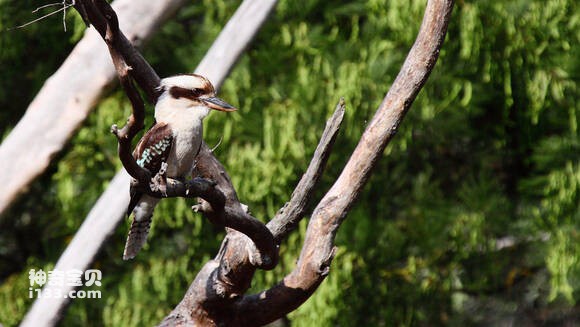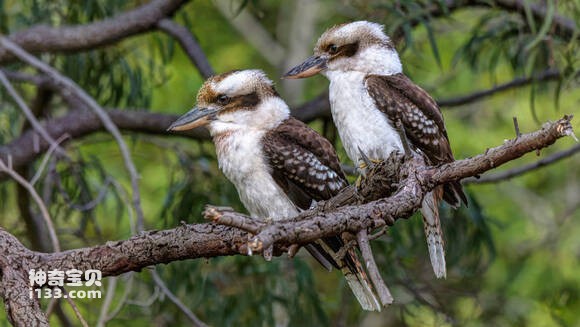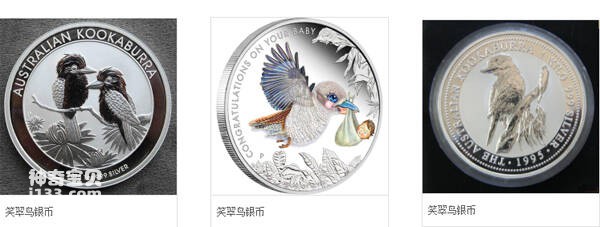Dacelo novaeguineae
IUCN
LCBasic Information
Scientific classification
- name:Dacelo novaeguineae
- Scientific Name:Dacelo novaeguineae,Laughing Kookaburra,Laughing Jackass
- Outline:Climbing birds
- Family:
Vital signs
- length:42-46cm
- Weight:About 500g
- lifetime:15 years or so
Feature
It is considered one of Australia's iconic birds and was used as a mascot at the Sydney Olympic Games.
Distribution and Habitat
Kookaburra is common in eastern and southern Australia and is also found in Tasmania and New Zealand. It is found on the Cape York Peninsula, south of Cooktown, south of Flinders and New South Wales.
Lush forested edges and clearings in eastern and southwestern Australia, open enough for scenic and hunting areas. It can also be found in wooded meadows and near towns.
Appearance
The Kookaburra is a fish-eating bird of the kingfisher family in eastern Australia, 42-46 cm in length, 8-10 cm in beak length and 500 g in weight. It is one of the two largest kingfishers in the kingfisher family and the big fish dog. So named for the sound of laughter. The Kookaburra has a big white head with a small brown hat on top. Brown patches on the cheeks. The beak is large, powerful and black. The upper body is grayish brown, the abdomen is intergray. Male birds have blue wings for identification. The chest and abdomen are white, and the tail is long, alternating between brown and black. Legs short gray.
Mouth thick straight, long and firm, mouth ridge round; No nasal furrow; The wingtip is long, the first primary feathers are slightly shorter, and the third and fourth feathers are longest; Tail short round; The head is large, the neck is short, the wings are short and round, and the tail is mostly short; The mouth is long and pointed, the rostrum is round and blunt, the f
Details
Laughing Kookaburra, Laughing Jackass and Dacelo novaeguineae have two subspecies.

Kookaburra live in groups of one to five families, consisting of several parents and two generations of their children. Kookaburra territorial concept is very strong, if there is a foreign invasion they will attack invaders, and even dare to deal with birds of prey such as goshawks. Protect your territory throughout the year. Because the kookaburra's song can be heard in the early morning or at sunset, it is called "the clock of the forest residents".
Kookaburra is a resident bird of woodland. But it is not like most other species of kingfisher just rely on fishing for a living, in addition to fish also prey on mice, frogs, lizards, crayfish, snails and insects, the biggest feature is able to prey on snakes and other reptiles much larger than their own, to catch snakes known for its ability to catch snakes is very high. An adult kookaburra can easily kill large snakes such as rattlesnakes and Taipan snakes, and will also attack the larger coralla lizard in groups.

Kookaburra is not afraid of humans, often in densely populated areas, and bold and greedy, after eating the food people give it will linger, stop in place "quack" giggle, it follows the feeder away, until full of food before slowly flying away. In the dry season, eucalyptus, Australia's main tree, often causes widespread fires because of its high oil content, and the kookaburra is comfortable picking up burned and frightened prey not far behind the fire seedlings.
Kookaburra mating every July to August, life only to find a partner, monogamous, the nest is generally built in the dense forest high tree hole, the female bird lays 1-5 eggs each time, usually 2-4 eggs, white eggs. The incubation period is about 25 days, and the chicks can fly away from the nest when they are one month old. The parents raise the young birds for about two months. The young birds born in previous years usually live with their parents and help their parents feed the young birds in the following year. Birds can live independently at 9 months old, reach sexual maturity around 1 year old, and have an average life span of 15 years.

Kookaburra is a common bird in Australia's cities and countryside, and like kangaroos, the Australian people love it very much, so there are images of kookaburra on a variety of cultural items, the most famous is the commemorative silver coin issued by the Perth Mint in Australia, the positive pattern is the head of Queen Elizabeth II, and the reverse is an independent branch of kookaburra. This commemorative coin has been issued annually since 1990.
Listed in the International Union for Conservation of Nature Red List of Threatened Species (IUCN) for 2016 ver 3.1 - Not Threatened (LC).
Protect wild animals and eliminate wild meat.
Maintaining ecological balance is everyone's responsibility!








